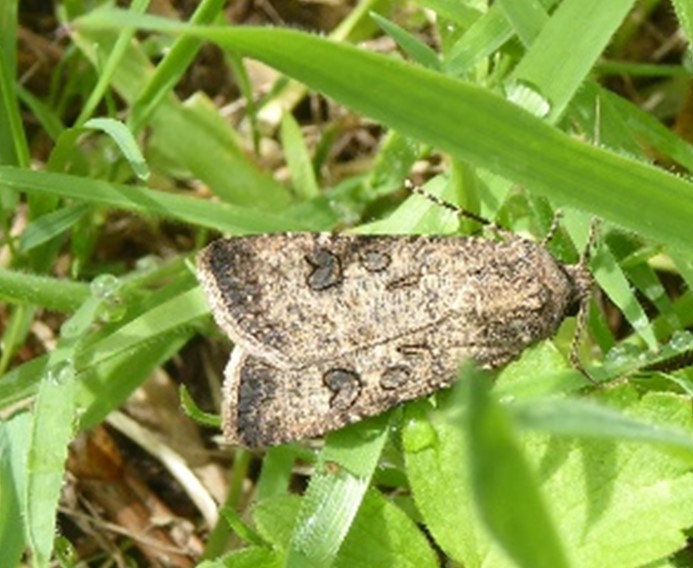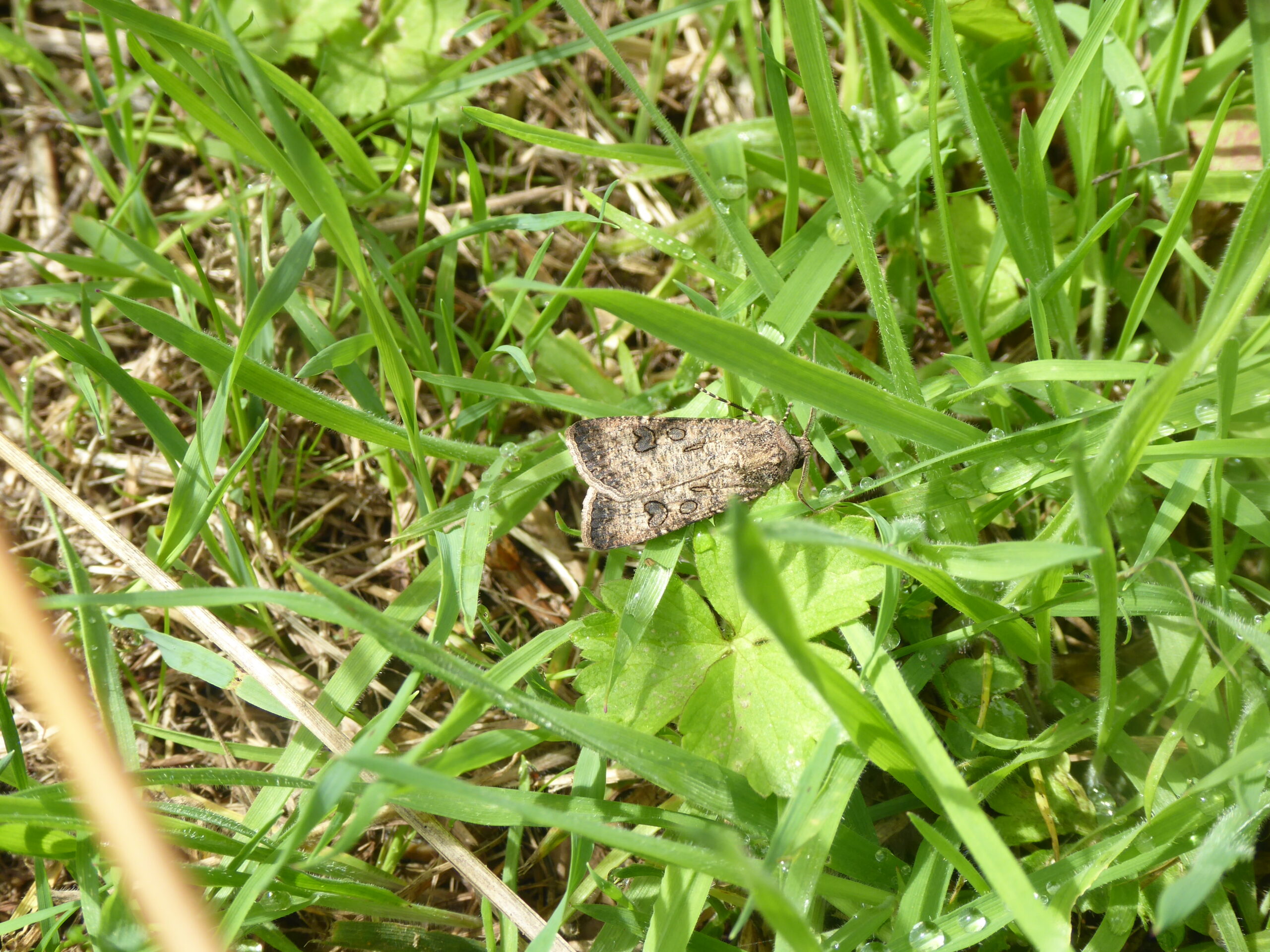
This moth was just resting in the grass looking like a dead leaf. I took a photo, and it was only when I looked at the picture I noticed the lovely markings that look as though someone has been drawing hearts and symbols on its wings with felt-tip pens. The Turnip Moth is in the same family as the Heart and Dart, and the Heart and Club, which all have similar markings, but both the others have solid black darts, rather than outlined ones.
I also learned another new word, pectinate, which means toothed, like the teeth of a comb. The antennae are pectinate in order to detect the pheromones of suitable mates more effectively.
This moth eats the roots of vegetables and herbaceous plants and is mainly found on managed land like gardens, parks, and farms. It isn’t really far off its course to be in the valley, surrounded by farmland and gardens.

This is a White Ermine Moth. It is in the watermeadow because the caterpillars like eating nettles and docks. The white wings range in appearance from a few black dots to many conjoined black spots. This one has a few specks of black. You will also notice the white ‘fur coat’ like a stole over its ‘shoulders’ and smart black and white legs. This moth has style!
UPDATE – we saw the caterpillar of this moth on 3 October.
